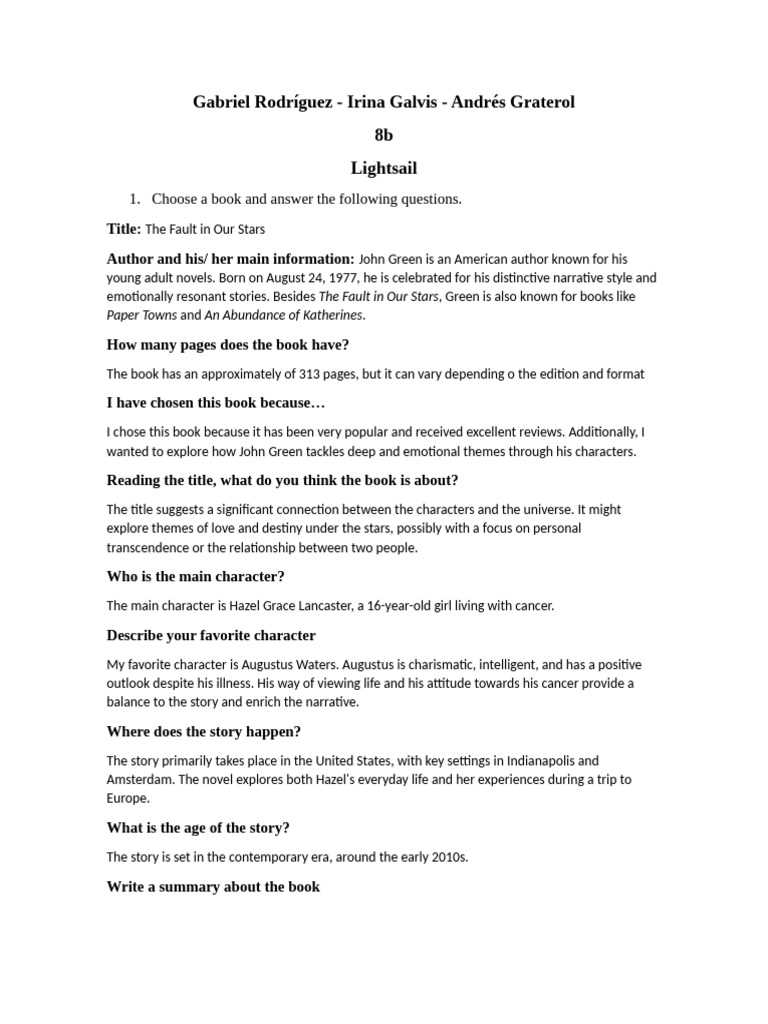
Exploring the themes, characters, and plot of this deeply emotional narrative, this section offers a thorough exploration of key moments and ideas. By analyzing significant scenes and relationships, we aim to uncover the deeper meanings behind each pivotal point in the story.
From the personal struggles of the protagonist to the impact of relationships with others, this guide addresses essential aspects of the narrative. Whether it’s examining the emotional depth or the philosophical questions raised, readers will gain a greater understanding of the novel’s lasting impact.
Important reflections are provided on love, loss, and the challenges faced by the characters. We delve into various perspectives that bring clarity to the author’s intentions, enriching the reading experience for anyone interested in a closer look.
Understanding Key Themes in The Fault in Our Stars
The novel presents a powerful exploration of complex emotions, personal challenges, and the profound connections formed between individuals. It touches on life’s fragility, the inevitability of death, and the pursuit of meaning in the face of hardship. By examining these central ideas, readers are invited to reflect on their own experiences and the ways in which they relate to the struggles of the characters.
Love and Sacrifice
One of the most prominent themes in the narrative is the portrayal of love as a transformative force. It is not only a source of comfort but also of great personal sacrifice. The deep bond between the two protagonists reveals how love can both uplift and challenge, pushing individuals to confront their deepest fears. Through their shared experiences, love becomes a vehicle for understanding life’s ultimate purpose, even amidst adversity.
Life, Death, and Legacy
The story emphasizes the delicate balance between life and death, showing how these two forces shape the characters’ existence. The protagonists’ struggles with illness make them acutely aware of their mortality, leading them to question the meaning of their lives and their legacies. The narrative encourages readers to consider how one’s actions, relationships, and beliefs can leave lasting impressions, even when time is limited.
Overview of Major Characters

In this emotional narrative, the key figures bring depth and complexity to the storyline. Their personal journeys and relationships create the foundation for the themes of love, loss, and self-discovery. By understanding the motivations and struggles of each character, readers can better appreciate the emotional resonance of the plot and the powerful connections that form throughout.
Hazel Grace Lancaster

As the central figure, Hazel is a thoughtful and introspective young woman whose life is defined by her battle with cancer. Despite her illness, she shows remarkable strength and resilience. Hazel’s character is shaped by her desire to live a meaningful life, even when faced with the uncertainty of her future. Her wit, intelligence, and vulnerability make her a relatable and empathetic protagonist.
Augustus Waters
Augustus is an optimistic, charming, and deeply romantic young man who has his own personal struggles with cancer. His character adds a sense of adventure and hope to the story, despite the challenges he faces. Augustus’ love for Hazel is transformative, and his philosophical outlook on life and death plays a significant role in the narrative’s emotional impact.
How Cancer Shapes the Story
The presence of illness profoundly influences both the characters and the narrative itself. It serves as a backdrop for many of the emotional and philosophical themes explored throughout the plot. Cancer is not just a physical condition in this story, but a catalyst that drives the characters to reevaluate their lives, relationships, and ultimate purpose.
Personal Transformation Through Struggle

The challenges brought on by illness force the characters to confront their own mortality, reshaping their perspectives and actions. This is particularly evident in how they form connections with one another and navigate their personal fears. Some of the key ways cancer influences the story include:
- Heightening emotional vulnerability and honesty in relationships.
- Prompting characters to reflect on what truly matters in life.
- Creating a sense of urgency, as time becomes a precious commodity.
The Impact on Relationships
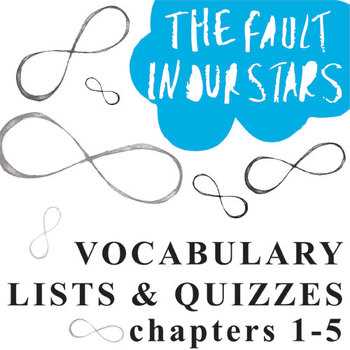
Illness creates complex dynamics between the characters, often testing the strength of their bonds. Relationships evolve as characters learn to cope with both their own suffering and that of those they care about. Key aspects include:
- The formation of a deep, transformative love between the protagonists despite their limited time.
- The role of family members in supporting and sometimes struggling with the emotional weight of chronic illness.
- Friendships that provide solace and strength, but also highlight the emotional challenges of watching someone endure such hardship.
What Makes Hazel’s Journey Unique
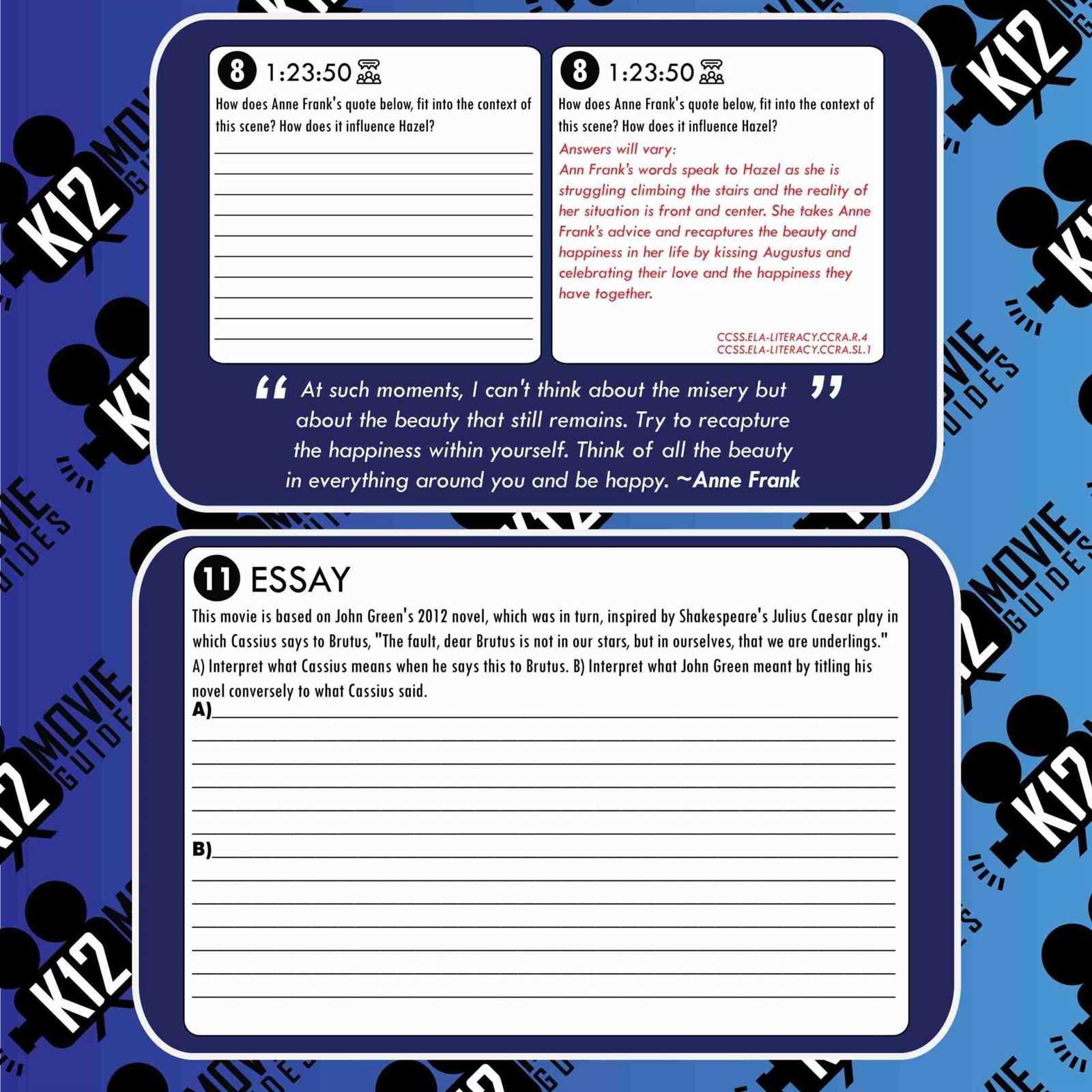
Hazel’s path through life is shaped by her courage in the face of constant physical and emotional challenges. What sets her story apart is not only her battle with illness, but her intellectual maturity and the way she navigates deep existential questions. Her journey is a delicate balance of accepting harsh realities while still seeking meaning, love, and connection in an uncertain world.
Unlike many characters who experience personal growth in more conventional ways, Hazel’s evolution is rooted in her constant confrontation with mortality. Rather than seeing life through the lens of fear or despair, she develops a profound understanding of its fleeting beauty. Key aspects that make Hazel’s journey remarkable include:
- Emotional resilience: Hazel’s ability to find strength in vulnerability, learning to love without fear of loss.
- Intellectual depth: Her passion for literature and philosophical contemplation shapes her unique perspective on life.
- Acceptance of impermanence: Hazel’s story challenges the notion of a “normal” life, embracing the inevitability of death while still finding joy in the moments that matter.
Through these elements, Hazel’s journey becomes more than just a fight for survival–it is a testament to the power of inner strength, love, and finding purpose even in the most difficult circumstances.
The Role of Augustus Waters in the Plot
Augustus is a key character whose presence profoundly impacts the direction of the narrative. His personality, experiences, and relationship with Hazel introduce themes of love, self-discovery, and the inevitability of death. Through his interactions with the protagonist, he challenges the way she views the world and forces her to confront her own fears and desires. Augustus’ influence on Hazel’s journey is both transformative and deeply emotional.
Throughout the story, Augustus serves as a catalyst for change in the life of Hazel. He pushes her to embrace vulnerability and love despite the uncertainty of their futures. Below is a breakdown of his role in the plot:
| Aspect | Impact on the Story |
|---|---|
| Personality | Charming, confident, and full of life, Augustus brings lightness and optimism to Hazel’s world. |
| Relationship with Hazel | Their bond evolves from friendship to a profound love that transcends their shared struggle with illness. |
| Philosophical Views | He challenges Hazel’s perceptions of life and death, offering an alternative view of meaning and legacy. |
| Tragic End | Augustus’ eventual decline underscores the novel’s themes of impermanence and the fragility of life. |
Through his character, Augustus highlights the importance of living fully, even when faced with overwhelming challenges. His role in the plot helps to deepen the emotional complexity of the narrative, making his presence essential to the overall development of the story.
Exploring the Relationship Between Hazel and Augustus
The dynamic between Hazel and Augustus is at the heart of the story, providing both emotional depth and complexity. Their bond evolves from a casual acquaintance into a profound connection, shaped by shared experiences and the challenges they face together. This relationship highlights themes of love, vulnerability, and acceptance, as they navigate the harsh realities of their illnesses while discovering meaning in each other.
Building Trust and Understanding
From their first meeting, Hazel and Augustus form a unique connection. While initially hesitant, Hazel is drawn to Augustus’ charm and positive outlook, which contrasts with her own more cautious approach to life. Augustus, in turn, is captivated by Hazel’s intelligence, wit, and depth. Their relationship develops slowly, as they begin to trust each other and open up about their personal struggles and fears.
Love Amidst Adversity
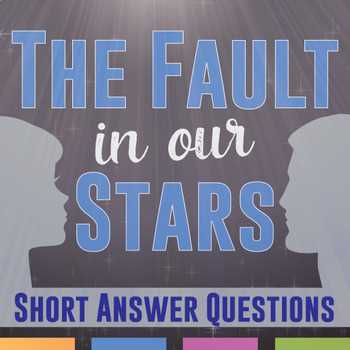
As their bond deepens, Hazel and Augustus’ relationship transforms into a powerful love story. Despite the weight of their respective health challenges, they find comfort and strength in each other. Their love is not defined by the circumstances of their illness but rather by their emotional connection, which allows them to experience joy, passion, and hope in a time filled with uncertainty. Through their love, they learn to confront mortality and find meaning in their shared moments.
The Significance of Hazel’s Cancer Diagnosis
Hazel’s cancer diagnosis plays a crucial role in shaping her character, worldview, and relationships throughout the story. Her struggle with illness is not only a physical battle but a profound emotional journey that forces her to confront life’s uncertainties. This diagnosis shapes the choices she makes, the way she interacts with others, and her understanding of love, mortality, and the meaning of existence.
Rather than defining Hazel solely by her illness, the narrative uses her condition to explore themes of identity and resilience. Her journey highlights the impact of chronic illness on an individual’s sense of self and the relationships they form. Hazel’s acceptance of her diagnosis, while never easy, becomes a pivotal moment in her emotional development and in her connection with others, especially Augustus. It is through this lens that she is able to find meaning and beauty in life, despite the inevitable challenges ahead.
The Impact of Supportive Characters

Supportive characters play a vital role in shaping the emotional depth of the narrative. They provide the main protagonists with both emotional and practical support, creating a network of relationships that allow the story to explore themes of friendship, love, and resilience. These characters help the primary figures grow, face challenges, and navigate difficult emotions, offering a sense of comfort, understanding, and hope in a world filled with uncertainty.
Through their interactions with Hazel and Augustus, supportive characters create a foundation of solidarity and empathy. Their influence goes beyond simple companionship, as they offer unique perspectives and emotional guidance. Some ways in which these characters impact the plot include:
- Providing Emotional Stability: Family members and friends act as anchors, offering reassurance in the face of illness and loss.
- Offering Humor and Lightness: Certain characters bring humor, creating moments of relief from the tension and heaviness of the central themes.
- Helping with Personal Growth: Through their interactions, they encourage self-reflection, helping Hazel and Augustus realize their strengths and vulnerabilities.
- Bringing New Perspectives: Supportive characters introduce different ways of thinking about illness, mortality, and living fully, shaping the protagonists’ views.
The impact of these secondary characters is undeniable, as they enrich the main narrative and help Hazel and Augustus to navigate their emotional landscapes.
How Does the Novel Portray Love
In this narrative, love is depicted as a complex, multifaceted force that transcends the boundaries of illness and mortality. Rather than focusing solely on romantic affection, the novel explores various dimensions of love, such as unconditional care, deep friendship, and selfless devotion. These relationships are portrayed as essential to personal growth, providing both comfort and challenges along the way. Love becomes a source of strength, offering meaning in an otherwise uncertain and fragile existence.
Romantic Love Between Hazel and Augustus
The relationship between Hazel and Augustus stands as the central romantic arc in the story. Their bond is marked by both passion and vulnerability, as they navigate their fears of loss while cherishing the time they have together. Despite the limitations imposed by their illnesses, their love is depicted as both transformative and healing.
Love Beyond Romance
Beyond romantic love, the novel also emphasizes the significance of familial and platonic relationships. The love between Hazel and her parents, for instance, reveals deep emotional complexity. These connections are portrayed as equally important, providing emotional stability and care in the face of hardship.
- Unconditional love: Hazel’s relationship with her parents showcases the deep, selfless care that sustains them through their challenges.
- Love as a source of strength: Augustus’ affection for Hazel motivates him to live fully, despite his own struggles.
- Selfless love: Characters like Hazel show how love can be an act of giving, even in the most difficult circumstances.
Overall, love in the novel is presented not just as an emotion but as a force that enables personal transformation, resilience, and deep connection between individuals, even in the face of inevitable loss.
Life Lessons from The Fault in Our Stars
This story imparts valuable life lessons that resonate deeply, especially in the face of hardship. It teaches that despite life’s inevitable challenges, it is possible to find meaning, joy, and purpose in moments of connection and love. The characters’ journeys highlight resilience, vulnerability, and the importance of living authentically, even when time is limited. By observing the experiences of those affected by illness and loss, readers are encouraged to reflect on their own lives and relationships.
- Appreciating the Present: Life is uncertain, and the future is unpredictable. Embrace every moment and find beauty in the present.
- Building Meaningful Connections: True relationships, whether romantic or platonic, provide the strength needed to face even the most difficult circumstances.
- Living Fully Despite Limitations: Even when faced with physical and emotional challenges, individuals can still make a profound impact and find purpose in life.
- Embracing Vulnerability: Allowing oneself to be vulnerable in relationships can lead to deeper, more meaningful connections.
- Understanding Mortality: Acknowledging the impermanence of life can encourage individuals to live more authentically and to focus on what truly matters.
These life lessons highlight the emotional depth and human experience, offering readers a chance to re-evaluate their perspectives on relationships, purpose, and personal growth.
The Symbolism of “An Imperial Affliction”
“An Imperial Affliction,” the fictional novel within the story, serves as a profound symbol of the characters’ emotional struggles and their search for meaning in life and death. Hazel and Augustus’s connection to this book represents their own battles with illness, uncertainty, and the feeling of being incomplete. The novel’s unfinished nature mirrors the lack of closure in their own lives, creating a powerful parallel between fiction and reality. Through this symbol, the narrative explores themes of mortality, unanswered questions, and the search for significance.
The Unfinished Story as a Metaphor
One of the most striking aspects of “An Imperial Affliction” is its abrupt ending. For Hazel, the book’s lack of resolution reflects the uncertainty and unpredictability of her own life. The unfinished nature of the story highlights the idea that some things in life may never have clear conclusions. This absence of closure becomes a metaphor for the characters’ own struggles with terminal illness and the idea that some questions may never be answered.
Shared Connection and Understanding
The novel also symbolizes a shared connection between Hazel and Augustus. Both are drawn to the book because it echoes their own feelings of isolation and longing for meaning. Their search for answers regarding the fate of the book’s characters becomes a way for them to confront their own fears and uncertainties. It serves as a reminder that, even in the face of mortality, the need for connection, understanding, and closure remains a powerful force.
Ultimately, “An Imperial Affliction” functions as a literary device that reinforces the themes of the narrative. It is not just a story within a story but a reflection of the emotional landscape that Hazel and Augustus navigate, offering readers a deeper insight into their inner worlds.
What Does the Ending Reveal

The conclusion of this story offers profound insights into the nature of love, loss, and the human experience. By the end, readers are confronted with the reality of mortality and the inevitability of parting, but also the enduring impact that individuals have on each other’s lives. The ending underscores the significance of the connections we form, showing that even brief relationships can leave lasting marks. It also emphasizes the idea that life, though fleeting, holds immense value through the moments we cherish.
Embracing Impermanence
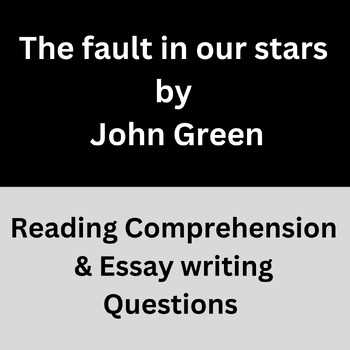
The ending highlights the transient nature of existence. Augustus’s passing forces Hazel to confront the harsh truth that life is finite, yet it also prompts her to reflect on the meaning that their relationship brought. Through their shared journey, they discover that love and connection can transcend time, leaving an imprint that defies mortality. Hazel’s realization that their love mattered, even if it was brief, reveals an important lesson: the value of life isn’t measured by its duration but by the depth of experiences shared.
Legacy of Love and Impact
One of the key revelations in the ending is how the love between Hazel and Augustus continues to resonate, even after death. The final moments with Augustus leave Hazel with a sense of purpose–she recognizes that their relationship was not just a fleeting moment but a significant chapter in both their lives. Hazel’s ability to accept the pain of loss while cherishing the beauty of what they had together reflects a deeper understanding of love’s lasting influence.
In the end, this story reinforces that while we cannot control the length of our lives, we have the power to shape their meaning. It is through our connections, love, and the impact we have on others that we find purpose, even in the face of inevitable endings.
Hazel’s Struggle with Mortality
Throughout her journey, Hazel grapples with the inescapable reality of her condition and the uncertainty of how much time she has left. Her internal battle centers on reconciling the limitations imposed by her illness with her desire to live a meaningful life. This conflict shapes her relationships, decisions, and emotional growth, creating a poignant exploration of human fragility and the inevitability of death. Hazel’s struggle is not just with her physical illness but with the existential challenge of living with the knowledge that time is finite.
Facing the Fear of Impermanence
Hazel’s awareness of her own mortality is a constant presence in her life. At first, she resists forming deep emotional bonds with others, fearing the inevitable pain of loss. This fear is intensified by the fragility of her health, which she views as an impending deadline. Her reluctance to fully embrace love and connection stems from a deep-seated belief that any attachment will be temporary, ultimately leaving her heartbroken. However, as she grows closer to Augustus, Hazel learns that facing mortality can lead to profound personal growth, as it forces one to appreciate life’s fleeting beauty.
Living with Uncertainty
Despite her struggles with the unpredictability of her future, Hazel slowly begins to accept that life cannot be controlled. The uncertainty of how long she will live becomes a background hum in her story, pushing her to question what really matters. In her evolving relationship with Augustus, she starts to let go of her need for certainty, embracing the moments she has rather than dwelling on the unknowns. This shift reflects the universal truth that all humans must eventually confront their mortality and learn to find peace with it, no matter how difficult.
In the end, Hazel’s journey is not just about battling illness but also about coming to terms with the impermanence of life itself. Her story serves as a powerful reminder of the human condition: that while death is inevitable, it is how we live and what we experience along the way that gives life its meaning.
The Role of Family in Hazel’s Life
Throughout Hazel’s journey, her family plays a crucial role in shaping her emotional well-being and providing support through her struggles. The unconditional love, care, and presence of her loved ones offer both comfort and conflict as she navigates her illness. The dynamic between Hazel and her parents reveals the depth of their relationship, as well as the challenges they face in coping with her condition. Despite the pain and difficulties, Hazel’s family remains an integral part of her story, influencing both her personal growth and her perceptions of life.
Support System and Emotional Stability
Hazel’s parents are her primary source of emotional support, always present to provide comfort and encouragement during difficult times. Her mother, in particular, plays an active role in ensuring Hazel’s well-being, constantly worried about her health yet fiercely protective. Her father’s quiet yet steady presence also contributes to Hazel’s sense of security, even though he struggles with the emotional weight of his daughter’s illness. Through these relationships, Hazel finds strength and learns to cope with the emotional turmoil of living with cancer.
Conflicting Emotions: Independence vs. Dependency
As Hazel grows older and seeks independence, she often finds herself torn between her desire for autonomy and her need for her family’s support. This tension arises as she navigates the complexities of living with a terminal illness, wanting to experience life on her own terms while still relying on her family for guidance and help. Her relationship with her mother, in particular, becomes a source of conflict, as Hazel wishes to protect her mother from the emotional burden of her condition but also needs her care. This delicate balance of dependence and independence highlights the nuanced role that family plays in Hazel’s life.
Impact of Family on Hazel’s Perspective
While Hazel’s personal journey is influenced by her relationships with others, it is her family’s unwavering support that helps her maintain perspective. The love they provide serves as a foundation for her growth, offering a sense of continuity in the face of illness and uncertainty. Yet, at the same time, her family’s struggles with her condition force Hazel to confront the painful realities of those she loves. In the end, the role of family in Hazel’s life underscores the complexity of love, sacrifice, and acceptance as she faces the challenges ahead.
Friendship and Loss in the Novel
In this narrative, the themes of friendship and loss are explored with great emotional depth, reflecting the complexities of human relationships in the face of illness. As the characters navigate their personal struggles, the bonds they form with others provide moments of solace and understanding. However, the looming presence of mortality makes these connections bittersweet, as they are often shadowed by the inevitable pain of separation. The way friendship evolves in the story highlights both the beauty and fragility of meaningful connections.
The Power of Deep Bonds
Throughout the plot, Hazel and Augustus share an intense and transformative friendship that transcends their shared experience of illness. Their bond, built on mutual respect, vulnerability, and an understanding of each other’s struggles, provides them with both comfort and strength. Through their conversations and shared experiences, they find a unique sense of belonging. This connection not only helps them cope with their conditions but also gives them a sense of purpose and fulfillment, showcasing how deep friendships can provide a sense of normalcy amid chaos.
Dealing with Loss
Despite the joy of friendship, the story also addresses the inevitable reality of loss. As illness progresses, the characters are forced to confront the uncertainty of life and the eventual separation from those they hold dear. This theme is especially poignant as characters must learn to cope with the emotional weight of their friendships being cut short. Loss, in its many forms, challenges the characters to grapple with grief, acceptance, and the difficulty of moving on. In this context, the narrative reminds readers of the delicate balance between love and impermanence that shapes relationships.
Understanding the Novel’s Tone and Style
In this narrative, both tone and style play a crucial role in conveying the emotional depth of the characters’ journeys. The tone, shaped by the characters’ reflections, often balances between moments of lightheartedness and poignant introspection. The author’s style is marked by a mix of wit, honesty, and vulnerability, allowing readers to connect deeply with the story. This approach helps to highlight complex themes such as love, loss, and hope, while also maintaining a sense of realism and authenticity throughout the plot.
Tone: Balancing Humor with Sorrow
The tone of the novel is one of the most striking aspects of its narrative. The author uses humor as a tool to cope with the weight of illness and mortality, providing moments of relief amidst the heaviness of the subject matter. Hazel and Augustus’ witty exchanges, full of sarcasm and clever insights, create a sense of lightness, even in the darkest of circumstances. However, this humor does not diminish the emotional impact; rather, it complements the sadness and vulnerability the characters experience. The juxtaposition of these elements reflects the complexity of life itself, where joy and sorrow often coexist.
Style: Realistic yet Poetic
The writing style in this novel is deeply immersive and emotive, yet it remains grounded in realism. The characters’ inner thoughts and dialogues are portrayed with raw honesty, making their struggles feel immediate and relatable. At the same time, the prose is often lyrical, particularly when exploring the characters’ emotions and their perception of life’s fleeting nature. This combination of straightforward narrative with poetic touches enhances the storytelling, inviting readers to reflect on their own lives and the delicate balance between hope and despair.
| Element | Effect on Narrative |
|---|---|
| Humor | Provides relief, humanizes characters, and highlights the resilience of the human spirit |
| Vulnerability | Creates emotional depth, allowing readers to empathize with characters’ struggles |
| Lyrical Prose | Enhances emotional resonance, making abstract themes more tangible |
Real-World Inspirations Behind the Story
This narrative draws inspiration from real-life experiences, especially those related to the challenges faced by young people dealing with life-threatening illnesses. The author sought to explore themes of resilience, love, and loss, weaving them into a story that reflects the complexities of human existence. By grounding the novel in real-world struggles, the story resonates deeply with readers, offering both emotional depth and a sense of authenticity. The portrayal of cancer, relationships, and the characters’ emotional journeys is informed by personal encounters and the broader impact of such experiences on individuals and families.
Personal Experiences and Motivation
Much of the inspiration behind the story stems from the author’s own reflections on illness and human connections. John Green, who had personal experiences with cancer patients, sought to portray the emotional depth and complexity of young people navigating these difficult circumstances. The relationships formed between the characters, their struggles with mortality, and their ability to find meaning in life even amidst such hardships were inspired by real accounts of young patients. By drawing from these experiences, Green aimed to create a narrative that honors the strength, vulnerability, and humanity of those affected by serious health conditions.
Influence of Real-Life Stories
In addition to personal experiences, Green was also inspired by stories of real individuals who faced similar battles with illness. He took care to represent the emotional weight of these stories in a way that was both respectful and honest. Through these real-life inspirations, the novel explores the intricacies of relationships formed in the face of illness, the impact of terminal diagnoses on families, and the way in which individuals cope with the inevitability of death. These influences provided a grounded foundation for the story, helping it maintain authenticity while still exploring universal themes of love, loss, and hope.
| Source of Inspiration | Impact on Narrative |
|---|---|
| Personal Experience | Informed character development, particularly in portraying emotional depth and resilience |
| Real-Life Stories | Provided authenticity to themes of illness, relationships, and mortality |
| Young Cancer Patients | Helped shape the portrayal of young people facing terminal diagnoses with dignity and courage |